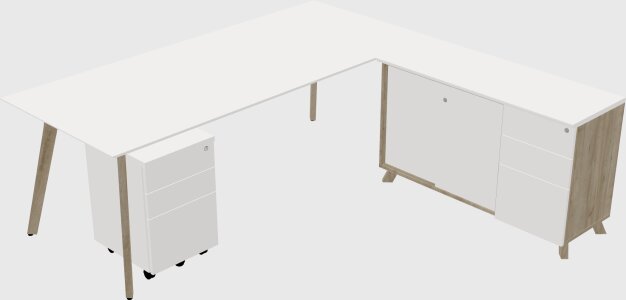The Evolution of Office Furniture: Creating a Productive and Comfortable Workspace
Introduction
In today’s fast-paced and dynamic work environment, office furniture plays a vital role in shaping the productivity and well-being of employees. Gone are the days of bland and uninspiring office setups; the modern workspace is designed to promote collaboration, creativity, and comfort. Let’s explore the evolution of office furniture and its impact on creating a productive and efficient workplace.

Ergonomic Revolution
One of the most significant advancements in office furniture has been the focus on ergonomics. Employers and designers now recognize the importance of providing comfortable and supportive furniture to prevent musculoskeletal issues and boost employee health. Ergonomic chairs with adjustable features, lumbar support, and armrests have become the norm, reducing fatigue and promoting better posture during long work hours.
Modular and Flexible Solutions
The rigid, traditional office layout is giving way to more flexible and modular furniture solutions. Cubicles are being replaced by open-plan spaces that encourage interaction and collaboration among team members. Modular workstations allow employees to adapt their workspace according to their needs, promoting a sense of ownership and personalized comfort.
Height-Adjustable Desks
Height-adjustable desks are gaining popularity as they cater to the diverse needs of today’s workforce. Employees have the option to sit or stand while working, promoting better blood circulation and reducing the risks associated with prolonged sitting. These desks have also been linked to increased productivity and focus.
Incorporating Technology
As technology continues to shape the modern workplace, office furniture is keeping pace with the latest advancements. Built-in charging ports, cable management solutions, and smart integration with devices have become commonplace, eliminating clutter and enhancing efficiency.
Biophilic Design
Biophilic design is a concept that seeks to connect the workplace with nature, creating a healthier and more stimulating environment. Incorporating natural elements like plants, natural light, and organic materials in office furniture design has proven to reduce stress, increase creativity, and boost overall well-being.
Collaborative Spaces
Recognizing the importance of teamwork and creativity, office furniture now includes collaborative spaces. Lounge areas with comfortable seating, communal tables, and acoustic pods enable employees to brainstorm, hold informal meetings, or take a break from their desks while staying productive.
Emphasis on Aesthetics
Gone are the days of dull and monotonous office interiors. Employers now understand that a well-designed, aesthetically pleasing workspace can inspire and motivate employees. Stylish furniture that complements the overall office design not only improves employee satisfaction but also leaves a positive impression on clients and visitors.
Conclusion
The evolution of office furniture has come a long way from the conventional and static setups of the past. Today’s furniture designs focus on creating an inclusive, comfortable, and engaging workspace that enhances productivity and well-being. From ergonomic chairs to modular workstations and collaborative spaces, every aspect of office furniture is meticulously designed to cater to the needs of a modern workforce. As workplaces continue to evolve, we can expect office furniture to play a pivotal role in shaping the future of work.